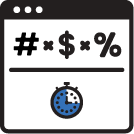Lately, it has become clearer and clearer that success lies in the data. The world of sports has been revolutionized by the rise of analytics - by measuring athletic performances, coaches can play to their team’s strengths, or even nail down their opponents’ weaknesses. Focusing and improving upon the metrics leads to more wins across the board; just look at the success of tennis player Novak Djokovic or the premise of the 2003 book-turned-film Moneyball.
The same can be said in the world of sales. The best sellers can better enable their team to win more by studying their metrics. Looking at the big picture is important, but the individual details are essential to setting you up for success. This is where the Sales Velocity Equation comes into play. Together, we’re going to look at what the Sales Velocity Equation involves, how to use it, and in particular, how MEDDPICC can support the improvement of the Sales Velocity metrics.
So, what is the Sales Velocity Equation?
The Sales Velocity Equation measures the speed at which your business makes successful deals to generate revenue. It consists of four core metrics:
-
Average Order Value/Annual Contract Value: Depending on your business model, this indicates the average value of what you are selling.
-
Time to close: Literally, the time it takes for a deal to be completed.
-
Conversion rate: How many of your potential opportunities turn into wins?
-
Number of opportunities: The amount of actual chances to strike deals.
Many salespeople only focus on increasing the number of opportunities, which is a limiting view of the overall deal process. In this way, we can compare it to football; it doesn’t matter how many times you have a shot at the goal if you haven’t properly trained your players. The approach to winning, both in sports and sales, needs to be multifaceted to ensure a higher rate of success.
The Equation itself is as follows:
Sales Velocity = ACV x Conversion Rate x Number of Opportunities / Time to Close
The results from the Sales Velocity Equation allow salespeople to track their velocity and accurately track their success. Once you measure something like this, you can upgrade it, just like a professional athlete’s performance.
You can boost your sales velocity by improving each of the individual metrics. Overall, this will increase the effectiveness of your team and lead to greater success on a broader scale. This can be achieved through the implementation of MEDDPICC.
“But wait, what is MEDDPICC?”
If you didn’t already know, MEDDPICC stands for Metrics, Economic Buyer, Decision criteria, Decision process, Paper process, Implicate the pain, Champion and Competition. It is a framework that allows salespeople the chance to analyze their approach to sales and improve their performance. Because MEDDPICC focuses on deals that have a higher chance of success, it saves valuable time and resources. By applying this method to the Sales Velocity Equation, we focus not just on the number of opportunities in the pipeline, but on each of the individual metrics that affect our sales performance as a whole.
Let’s dive into how you can apply MEDDPICC to support each metric.
Number of Opportunities
I - By identifying the pain, you can demonstrate what value your business has by showing the success you have brought to similar customers. It also allows you to identify other potential opportunities.
M - Studying the quantifiable impact of the above pain can show how your business can solve the problem.
Ch - When you identify your champion, you can tailor your approach to them by figuring out what pain and metrics are important to them, and so increase your number of opportunities.
Annual Order/Contract Value
I - By implicating more pain, with more stakeholders, you can add to the overall value of the product/service you provide by providing more solutions.
M - Using metrics to find your business case helps you justify why the deal holds value. It also allows you to map your order/contract value to your customers’ key initiatives
Dc - You can increase your order/contract value by reverse engineering decision criteria from similar opportunities and introducing them to current opportunities.
Dp - Understand not just how they make a decision, how they decide to evaluate, and who is responsible for that evaluation.
Ch - If you find your champion’s vested interest, you can work with them to uncover more value to the order/contract, and introduce more stakeholders.
E - By adapting your proposition to align with your economic buyer’s key initiatives, you highlight the value in your contract.
Conversion Rate
Ch/E/Co - By identifying and understanding your champion, economic buyer, and competition, you gain insight into the lay of the land - who the stakeholders and detractors are, how you can work with them, and any obstacles you may encounter. This means you can ensure value-based engagement with all stakeholders
I/M - By understanding the pain faced by your customers, and quantifying the value in solving the pain, you highlight why potential customers should convert to actual customers, thus increasing your conversion rate.
Dc - When your customer knows your strengths and how you differ from the competition, they consider this as part of their Decision criteria.
Dp - If you work closely with the customer to ensure evaluation follows a clear process, you can keep your conversion rate high.
Time to close
I - The urgency of the pain impacts the time to close. By figuring out how much the pain hurts, and how broadly felt it is, you can tailor your approach to shorten the time taken.
M - If you measure what value is lost for every moment lost, as well as what is at risk, you can demonstrate the benefits of a shorter time taken to close the deal.
Ch - By understanding how involved and invested your champion is, you can get a better idea of how long the time to close will be, as you can see whether the deal is a priority for them or not.
E - When you find out how closely you align with the economic buyer’s objectives, you can understand how long the time to close may be.
Dp - To keep the overall process streamlined, it is important to have the decision process clearly mapped out with the customer’s consensus.
P - By making sure the paper process is marked out, and every possibility covered, you prevent encountering issues further down the line that may slow down the time taken to close.
As we have seen, MEDDPICC can help add to your Annual Order/Contract Value, increase your Conversion Rates, shorten your Time to Close, and increase the overall Number of Opportunities. Elite sellers, just like elite athletes, need to exploit every advantage to ensure their success. By using the Sales Velocity Equation in tandem with MEDDPICC, salespeople can elevate their business and generate more revenue. So, get out there. This is how you win!
Useful Links:
https://blog.hubspot.com/sales/sales-velocity
https://www.donaldaly.com/the-most-proven-way-to-grow-revenue/





.png)





.png)
























%201.png)








.png)

.png)
.png)
.png)